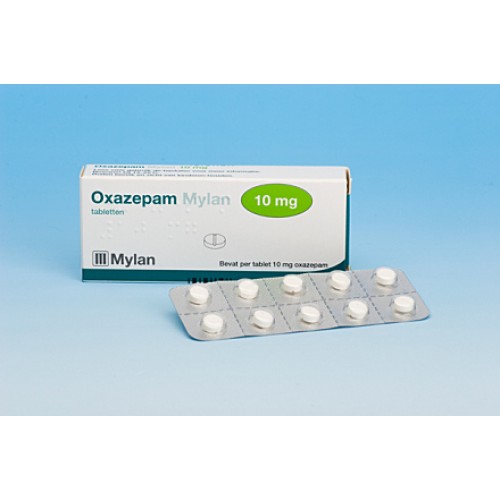
Oxazepam is a short-to-intermediate-acting benzodiazepine. Oxazepam is used for the treatment of anxiety and insomnia More
Oxazepam is a short-to-intermediate-acting benzodiazepine. Oxazepam is used for the treatment of anxiety and insomnia
Oxazepam- used for the treatment of anxiety and insomnia
Tazepam; Adumbran; Serax; Droxacepam
Anxozap, Serepax
7-chloro-3-hydroxy-5-phenyl-2,3-dihydro-1H-1,4-benzodiazepin-2-one
Oral absorption, hepatic metabolism.
Oxazepam is believed to stimulate GABA receptors in the ascending reticular activating system. Since GABA is inhibitory, receptor stimulation increases inhibition and blocks both cortical and limbic arousal following stimulation of the brain stem reticular formation.
The recommended dose range is 10-30 mg in divided doses.
For the treatment of anxiety disorders and alcohol withdrawal.
Syncope (rare), oedema; drowsiness, ataxia, dizziness, vertigo, memory impairment, headache, paradoxical reactions (excitement, stimulation of effect), lethargy, amnesia, euphoria; rash; decreased libido, menstrual irregularities; incontinence; leukopenia, blood dyscrasias; jaundice; dysarthria, tremor, reflex slowing; blurred vision, diplopia; drug dependence.
Pregnancy and lactation.
Store at 15-30°C
286.713
C15H11ClN2O2
604-75-1